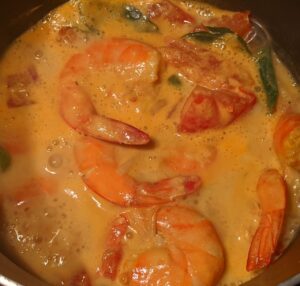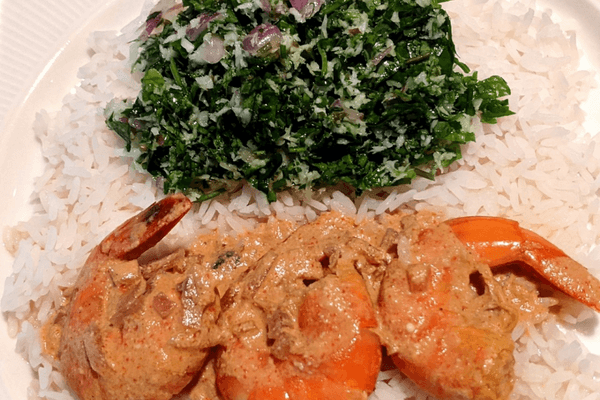The answer is YES, you can eat shrimp tails.
They are not toxic or harmful to consume, and they are actually a good source of calcium and protein. However, the texture and taste of the tails may not be appealing to everyone, which is why some people choose to remove them before eating the shrimp.
There are also some potential risks to consider when eating shrimp tails, such as the possibility of choking or digestive issues. It is important to chew the tails thoroughly and be mindful of any discomfort or reactions after consuming them. Overall, whether or not to eat shrimp tails is a personal preference and depends on individual taste and tolerance.
Can You Eat Shrimp Tails?
The Edibility of Shrimp Tails
Shrimp tails are edible and can be consumed without any harm. However, the tails are not as digestible as the rest of the shrimp. The tail is mostly made up of chitin, a tough and fibrous material that is difficult for the human digestive system to break down. It is recommended to remove the tail before consuming the shrimp.
The Nutritional Value of Shrimp Tails
Shrimp tails contain some nutritional value, but it is not significant compared to the rest of the shrimp. They are a good source of protein and low in calories, but they also contain high levels of cholesterol and salt. The tails also contain omega-3 fatty acids, selenium, and vitamin B12, which are beneficial for a healthy heart and immune system.
The Texture and Flavor of Shrimp Tails
The texture of shrimp tails can be tough and fibrous, which may not be appealing to some people. The flavor is similar to the rest of the shrimp, but it can be slightly more intense due to the concentration of chitin. Some people enjoy the crispy texture of deep-fried shrimp tails.
The Safety of Eating Shrimp Tails
Eating shrimp tails is safe as long as they are cooked properly. Undercooked shrimp can contain harmful bacteria that can cause food poisoning. It is also important to remove the vein and shell before cooking to avoid any choking hazards.
In summary, shrimp tails are edible but not as digestible as the rest of the shrimp. They contain some nutritional value but are not significant. The texture and flavor may not be appealing to everyone, and it is important to cook them properly for safety reasons. Ultimately, whether to eat shrimp tails or not comes down to personal preference and presentation purposes.
The Edibility of Shrimp Tails
Cooked Shrimp Tails
Cooked shrimp tails are generally considered safe to eat. They can be crunchy and add a different texture to the dish. However, some people find the tails unappetizing and choose to remove them. It is a matter of personal preference. In this spicy shrimp fried rice recipe (pictured below), I use fried shrimp with shells and tails on. The tails are crunchy, and can be easily removed if you don’t like them.

Shrimp can also be cooked with tails in a shrimp curry (see below).

Raw Shrimp Tails
Raw shrimp tails are not recommended for consumption. They can be a breeding ground for bacteria and parasites that can cause food poisoning. It is important to remove the tails before cooking the shrimp to avoid any potential health risks.
In conclusion, while cooked shrimp tails are safe to eat, raw shrimp tails should be avoided. It is always important to properly cook and handle seafood to ensure it is safe for consumption.
The Nutritional Value of Shrimp Tails
Shrimp is a popular seafood choice for many people because of its delicious taste and numerous health benefits. However, many people wonder if they can eat shrimp tails or if they should discard them. In this section, we will explore the nutritional value of shrimp tails to help you decide whether or not to consume them.
Protein and Chitin
Shrimp tails are a good source of protein, which is essential for building and repairing tissues in the body. In fact, 100 grams of shrimp tails contain about 20 grams of protein. Additionally, shrimp tails contain chitin, a type of fiber that has been shown to have various health benefits, including improving gut health and reducing inflammation.
Omega-3 Fatty Acids
Shrimp tails are also a good source of omega-3 fatty acids, which are essential for brain function and heart health. Omega-3 fatty acids have been shown to reduce inflammation, lower blood pressure, and improve cholesterol levels. In fact, 100 grams of shrimp tails contain about 0.3 grams of omega-3 fatty acids.
Selenium and Vitamin B12
Shrimp tails are also a good source of selenium and vitamin B12. Selenium is important for supporting the immune system and thyroid function, while vitamin B12 is essential for red blood cell formation and nerve function. In fact, 100 grams of shrimp tails contain about 40% of the recommended daily intake of selenium and 60% of the recommended daily intake of vitamin B12.
Low in Calories and High in Nutrients
Shrimp tails are also low in calories and high in nutrients, making them an excellent addition to a healthy diet. 100 grams of shrimp tails contain only about 90 calories, while providing numerous essential nutrients such as iron, phosphorus, and zinc.
In conclusion, shrimp tails are a nutritious and delicious part of the shrimp that can be consumed safely. They are a good source of protein, chitin, omega-3 fatty acids, selenium, and vitamin B12. Additionally, they are low in calories and high in nutrients, making them an excellent addition to a healthy diet.
The Texture and Flavor of Shrimp Tails
Texture of Shrimp Tails
Shrimp tails have a unique texture that can be described as crunchy and slightly chewy. The texture is similar to that of a thin, crispy chip, but with a bit more resistance. The tail is made up of a thin exoskeleton that provides a satisfying crunch when bitten into.
However, the texture of shrimp tails can also vary depending on how they are cooked. If the tails are boiled or steamed, they can become softer and more pliable, while frying them can make them even more crispy.
Flavor of Shrimp Tails
Shrimp tails have a mild flavor that is slightly briny and seafood-like. The flavor is not as strong as the meat of the shrimp, but it can still be enjoyable.
The flavor of shrimp tails can also be influenced by how they are prepared. Boiling or steaming the tails can result in a more subtle flavor, while frying them can enhance their natural brininess.
Overall, the texture and flavor of shrimp tails can be appealing to those who enjoy seafood. While they may not be for everyone, they can be a tasty addition to certain dishes or enjoyed on their own as a snack.
| Pros | Cons |
| Crunchy texture | Can be difficult to digest |
| Mild, briny flavor | Not as flavorful as the meat of the shrimp |
| Versatile in preparation | May not be appealing to everyone |
The Safety of Eating Shrimp Tails
Choking Hazard
Shrimp tails are not recommended to be eaten due to the risk of choking. The hard and sharp edges of the tail can get stuck in the throat, causing discomfort and even choking. Children and the elderly are particularly vulnerable to this risk. Therefore, it is advisable to remove the tails before consuming shrimp.
Allergies
Shrimp tails may also cause allergic reactions in some people. This is because the tails contain chitin, a substance that can trigger an allergic response in individuals who are allergic to shellfish. Symptoms of an allergic reaction may include hives, swelling, difficulty breathing, and in severe cases, anaphylaxis. Therefore, people with shellfish allergies should avoid consuming shrimp tails.
Food Poisoning
Consuming shrimp tails can also increase the risk of food poisoning. The tails may contain harmful bacteria that can cause illness if not cooked or stored properly. It is important to cook shrimp thoroughly and store it at the appropriate temperature to prevent the growth of bacteria. Additionally, it is recommended to consume shrimp within two days of purchase to reduce the risk of food poisoning.
In conclusion, while shrimp tails may be edible, it is not recommended to consume them due to the risk of choking, allergies, and food poisoning. It is advisable to remove the tails before consuming shrimp to avoid any potential health risks.

